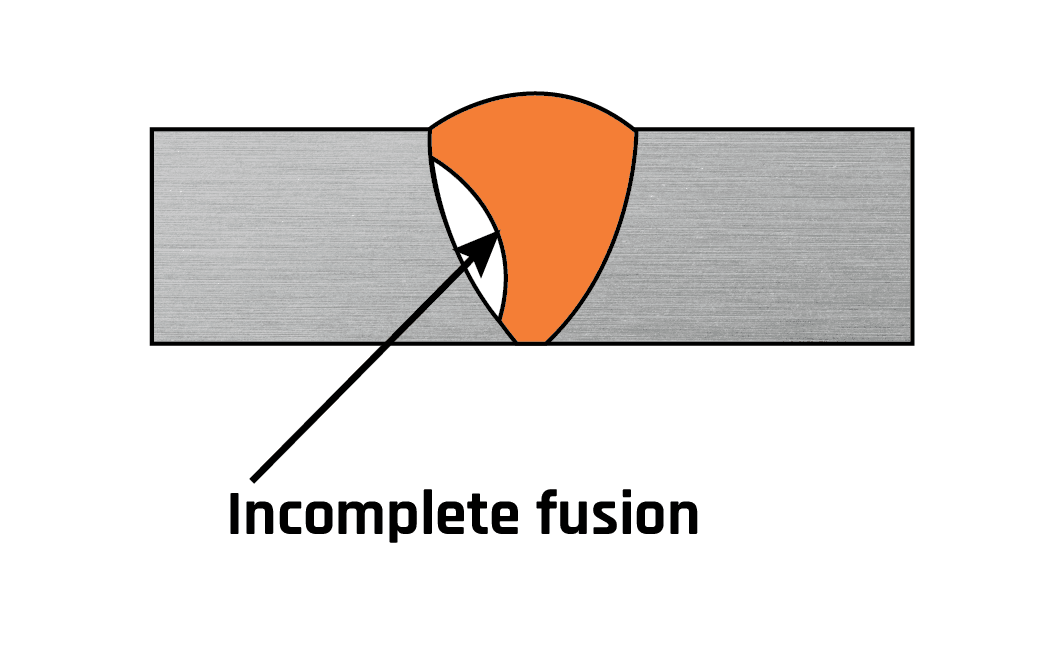Preventing Weld Undercut: Proven Techniques Every Welder Must Know
Preventing Weld Undercut: Proven Techniques Every Welder Must Know
Blog Article
Important Tips for Welders: Protecting Against Undercut Welding and Ensuring Stronger Weld Joints
In the world of welding, accomplishing strong and long lasting weld joints is the cornerstone of producing top notch job. One common difficulty that welders commonly come across is undercut welding, which can jeopardize the stability of the weld joint.

Recognizing Undercut Welding
Undercut welding is a typical welding flaw that happens when the weld metal fails to appropriately fill the groove and results in a groove-like anxiety along the weld grain. This defect damages the weld joint, making it vulnerable to fracturing and failing under stress. Undercutting can be triggered by numerous factors, including too much welding current, high welding speed, incorrect electrode angle, wrong electrode size, and poor welding technique.
One of the primary factors for undercut welding is an imbalance between the welding existing and the welding rate. If the welding current is expensive or the welding rate is too quickly, the weld steel might not sufficiently load the groove, causing damaging. Furthermore, utilizing an electrode that is as well large can result in a comparable result, as the excess steel can not correctly move into the groove.
To avoid undercut welding, welders need to ensure they are utilizing the right welding specifications, maintain an ideal electrode angle, choose the appropriate electrode dimension, and practice proper welding techniques. By attending to these aspects, welders can minimize the risk of damaging and create more powerful, extra reliable weld joints.
Appropriate Welding Strategy
Reliable welding strategy plays a crucial duty in ensuring the top quality and honesty of weld joints. One basic element of correct welding method is keeping the right angle and distance between the welding gun and the workpiece.
Additionally, a consistent and regular hand movement is important for producing strong and long lasting weld joints. Welders ought to go for smooth, consistent movements to make sure also distribution of the weld material. Correct control of the welding weapon and filler product is likewise key to accomplishing ideal penetration and combination.
In addition, regulating the warmth input and picking the suitable welding criteria based upon the material being welded are essential consider attaining premium welds - Preventing weld undercut. Welders need to follow the recommended setups offered by welding treatment specifications and readjust them as needed based on the specific needs of the project. By grasping appropriate welding methods, welders can dramatically enhance the strength and integrity of their weld joints
Picking the Right Electrode
Preserving the correct angle and range between the welding gun and the workpiece is essential when thinking about the importance of picking the right electrode in welding applications. The option of electrode plays an essential duty in figuring out the high quality and stamina of the weld joint. Electrodes can be found in different kinds, each designed for particular functions and materials.
First my website of all, selecting the proper electrode size is crucial. Thinner electrodes appropriate for welding slim materials, while thicker electrodes are better for thicker products and higher heat applications. Matching the electrode size to the thickness of the work surface helps achieve a well balanced weld.
Second of all, recognizing the product structure of the electrode is crucial. Various electrodes are made for welding specific products like steel, stainless-steel, light weight aluminum, or cast iron. Using the right electrode product makes sure great combination and reduces the threat of flaws in the weld.
Last but not least, considering the welding setting and strategy is crucial when choosing the electrode type. For circumstances, specific electrodes are much better suited for overhanging or upright welding placements, while others function well for level or straight placements. Choosing the appropriate electrode based on the welding strategy boosts the overall weld quality and stability.
Preparing the Base Steel
To ensure a successful welding process, what initial actions should be taken when preparing the base steel for welding? In addition, any kind of existing weld product or deposit from previous welding must be gotten rid of to ensure a tidy surface area for the brand-new weld.

Performing Post-Weld Evaluations

After performing these analyses, welders have to contrast the results against industry standards and project needs to make certain that the weld joint fulfills all essential requirements. Any type of inadequacies or deviations uncovered throughout the post-weld evaluation ought to be without delay resolved with suitable corrective measures to assure the weld's stability. By vigilantly performing post-weld examinations and immediately dealing with any concerns, welders can maintain the quality and integrity of their job, ultimately adding to the security and longevity of the bonded structures.
Verdict

To conclude, preventing undercut welding and making sure stronger weld joints call for a combination of proper welding method, choosing the appropriate electrode, preparing the base metal appropriately, and conducting post-weld examinations. By comprehending the reasons for undercut welding and executing the essential safety measures, welders can generate premium weld joints that fulfill industry criteria and ensure the architectural honesty of the welded parts.
Undercut welding is a common welding problem that takes place when the weld metal stops working to effectively fill up the groove and results in a groove-like clinical depression along the weld bead (Preventing weld undercut). Undercutting can be created by various elements, consisting of excessive welding present, high welding rate, inappropriate electrode angle, incorrect electrode size, and bad welding strategy
One of the main reasons for undercut welding is an inequality in between the welding current and the welding speed. If the welding current is as well high or the welding rate is too fast, the weld metal may not appropriately fill the groove, leading to undercutting.Preserving the right angle and range between the welding gun and the workpiece is fundamental when thinking about the value of picking the right electrode in welding applications.
Report this page